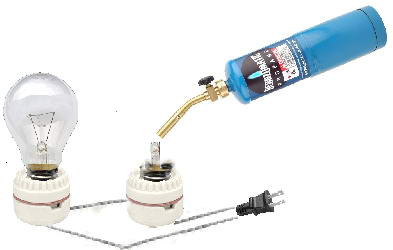Tap water conducts electricity, which seems kind of weird since water isn't a metal and has a covalent bond. Of course it conducts because it has ions dissolved in it that can move around and act like the electrons (in a way) as those in a wire. Pure water without ions is a lousy conductor.
Glass is the prototypical example of an insulator. It too is composed mostly of non-metals and has a covalent bond. And like tap water it too has ions. Why doesn't it conduct?
The ions are frozen in place, of course. Let's not argue whether or not room temperature glass is a solid -- suffice it to say that the particles aren't going anywhere fast. On the other hand, if you melt the glass, then the ions can move and then it will conduct electricity.
How to do this? Connect two lamp bases in series and then connect them to a wall plug protected by a GFCI. Carefully break the glass globe off a bulb. You will see a plug of glass with two wires coming out of it. The wires are in turn connected to the filament. Clip the wires to the plug of glass. Put an intact bulb in one socket and a the broken bulb in the other socket. Plug them into the wall. Careful, careful. You've got live current here. The GFCI will help but it's not perfect.

Take a torch and heat the glass plug until it glows red/orange. The other bulb will then light up. Notice that the plug will stay molten from the heat running through the wire. Unplug the apparatus. The bulb will go out and the molten glass will cool. If you plug it back in before the glass freezes, the bulb will light up again. If you unplug and wait until the glass is cooler (although still hot enough to burn you) before plugging it back in, then the bulb will not go back on.